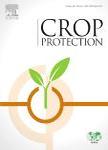版权所有:内蒙古大学图书馆 技术提供:维普资讯• 智图
内蒙古自治区呼和浩特市赛罕区大学西街235号 邮编: 010021

作者机构:Xinyang Agr & Forestry Univ Sch Informat Engn Xinyang 464000 Peoples R China Macao Polytech Univ Fac Appl Sci Macau 999078 Peoples R China
出 版 物:《CROP PROTECTION》 (Crop Prot.)
年 卷 期:2025年第190卷
核心收录:
学科分类:09[农学] 0904[农学-植物保护] 0901[农学-作物学]
基 金:Young Teachers' Research Fund Spon-sored Project of Xinyang Agriculture and Forestry University [QN2021058] Henan Scientific and Technological Research Project
主 题:Tea leaf disease Deep learning Attention Local binary patterns Handcrafted features
摘 要:The diseases of tea leaves have a significant impact on their quality and yield, making the rapid identification of leaf diseases in tea crucial for prevention and control. We propose an LBPAttNet model, incorporating a lightweight coordinate attention mechanism into ResNet18 to enhance disease localization and reduce background interference. Furthermore, we employ the local binary patterns (LBP) algorithm to further extract local structural and textural features of tea leaf diseases, and integrate deep features to obtain a more comprehensive feature representation. Additionally, we utilize the focal loss function to alleviate the issues of class imbalance and varying difficulty levels in tea leaf disease, thereby further enhancing the accuracy of tea disease recognition. Our model achieves an accuracy of 92.78% and 98.13% on two publicly available tea disease datasets, surpassing ResNet18 by 3.84% and 2.59% respectively. Compared to traditional algorithms such as AlexNet, GoogleNet, MobileNet, VGG16, and other tea disease recognition algorithms, our model also shows significant improvements. These results highlight the superior performance and robustness of our model.